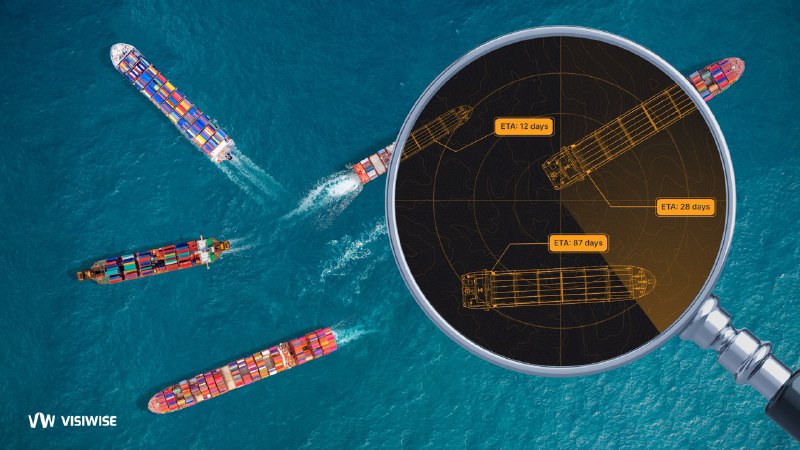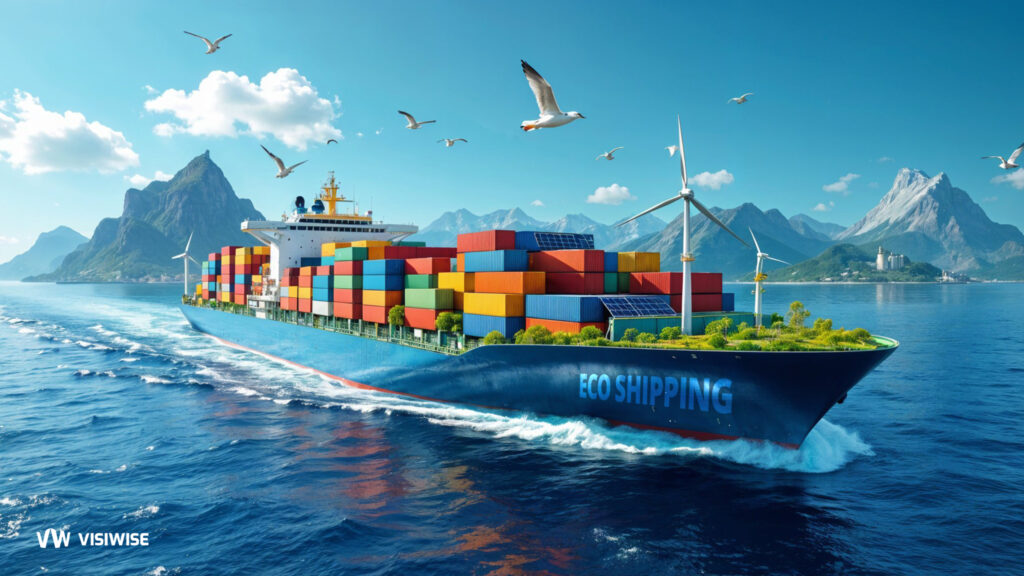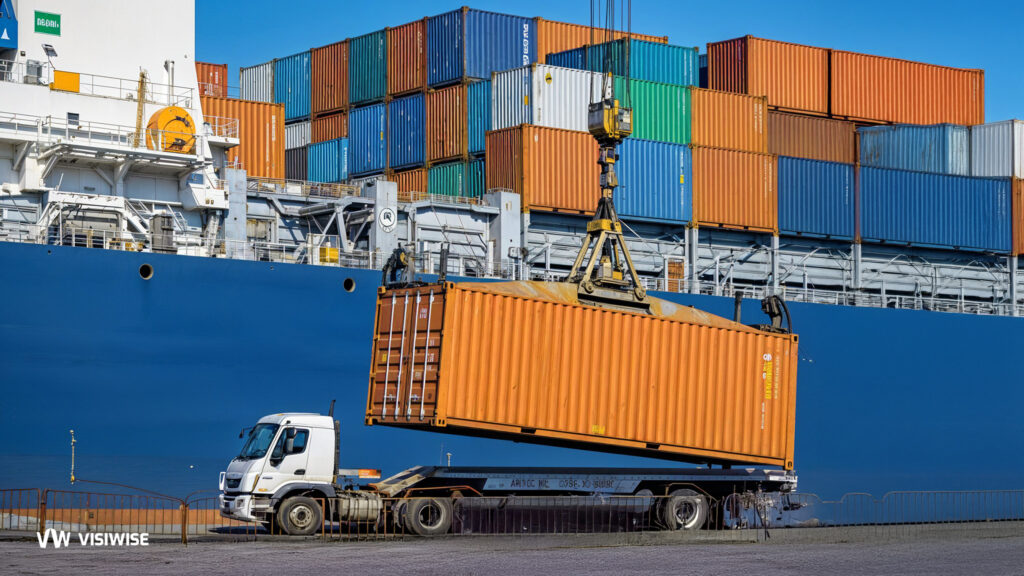The world of shipping and logistics has gone through some remarkable changes in recent years, thanks to globalization and digitalization. In this exciting new era, having real-time visibility of ocean freight has become absolutely essential for effective supply chain management. It’s no surprise that more and more shippers, freight forwarders, truckers, and other industry players are investing in tools and platforms that offer real-time shipment visibility. These technologies are being developed with massive investments to integrate real-time data with freight information and provide highly accurate estimated time of arrivals (ETAs).
But why is real-time shipment visibility so important, you may wonder? Well, it allows shippers, carriers, freight forwarders, and others to track their precious cargo’s exact location at any given moment and know precisely when it will reach its destination. This is incredibly valuable because it enables companies to plan when their products will arrive at warehouses, stores, or even in the hands of end consumers. It also helps them anticipate and address any potential delays, set up necessary alerts, and ultimately deliver a fantastic experience to their customers.
For truckers and carriers on the road, shipment visibility means keeping a close eye on vehicles, cargo, and containers. But for shippers handling ocean freight, it goes a step further. They need to track when the cargo will arrive at the port, the time it takes for unloading the ship (berthing), and the duration required for documentation and formalities. All these factors significantly impact the estimated time of arrival (ETA) and the smooth flow of cargo, which, in turn, affect shipping rates and the subsequent transportation of the goods.
Container lines, freight forwarders, and shippers also need to know the arrival timing at ports, the right time for unloading or loading, and even opportunities for efficient container exchanges (street-turns) to secure the best rates.
While there are various visibility solutions that offer insights at the container level, accurately determining ETAs remains one of the biggest challenges for shippers and stakeholders. This is where real-time container visibility comes to the rescue!
container visibility is like the GPS for your ocean freight, allowing you to know exactly where your shipments are and when they’ll arrive. Achieving container visibility may sound challenging, but it’s incredibly important for effective supply chain management.
Container visibility plays a central role in making your supply chain run smoothly. Without it, tasks like managing inventory, avoiding extra fees, and collaborating with partners become much more difficult. Containers are the building blocks of your supply chain, regardless of your industry or specific setup. So, when you have visibility into your containers, it becomes easier to have visibility throughout your entire supply chain.
why container visibility is like the atomic unit of supply chain management
That’s why container visibility is like the atomic unit of supply chain management. It’s the key ingredient that brings transparency and optimization to your operations. When you prioritize container visibility, you gain real-time tracking data that empowers you to make your supply chain more agile, transparent, and reliable. You can anticipate and respond to disruptions, easily share data with partners, and make informed decisions to keep your inventory at optimal levels while minimizing fees.
Treating container visibility as the atomic unit means putting it at the forefront of your supply chain management strategy. By doing so, you can access the timely and detailed container tracking data that brings container visibility to life.
Now, let’s talk about the difference between traditional and real-time data. Traditional methods often rely on outdated or carrier-dependent milestones to provide information about freight. Unfortunately, this approach creates blind spots in logistics, leading to frustrating delays. For example, when transporting freight on the road, transferring cargo to a new vehicle can result in a 1–2-day delay. In the case of ocean freight, moving cargo from one ship to another can cause even longer delays, sometimes up to 15 days.
It’s important to note that ocean shipments often involve trans-shipment and multiple stopovers, making the journey more complex than a simple port-to-port trip. In such cases, freight forwarders, shippers, and other stakeholders require real-time data to have complete visibility of the schedule. They need information about intermediate checkpoints, stopovers, and other transitions. Without this data, companies lack visibility on crucial aspects such as the exact location of their inventory, whether carriers are meeting the required service levels, and where inefficiencies and bottlenecks may be occurring in the supply chain.
Furthermore, sea freight rates are influenced by various factors such as load type, port requirements (documentation), customs procedures, and additional costs. Without real-time container visibility into the status and position of their freight, supply chains remain inefficient. Operations suffer because managers can’t accurately predict when to expect the arrival of their freight, and stakeholders are unaware if they are getting the best rates.
Unlike traditional methods, real-time container visibility tools empower shippers, freight forwarders, and other stakeholders to gather reliable data independently, with or without carrier inputs. While third-party logistics providers (3PLs) can partially address these needs with their transportation management systems and other software tools, there’s still a gap that needs to be filled.
So, how can you acquire real-time container visibility?
The answer lies in utilizing digital tools and interconnected systems that communicate with each other. The Internet of Things (IoT) and big data analytics play a crucial role in this process. For example, to obtain accurate ETAs, organizations leverage IoT data collected from truckers and drivers. This data helps them understand driving speed, timing, driver behavior in traffic and congested areas, and more. Electronic Logging Devices (ELDs) installed in trucks capture this data, and drivers can also use mobile apps to log work hours, stops, and other relevant details.
When it comes to real-time container visibility, factors like wind speed, trans-shipment, and stopovers influence the arrival time at the destination port. Companies can collect relevant data from sensors connected to cargo, containers, drivers, vehicles, or vessels to predict their impact on arrival times or ETAs.
Container lines and shippers can also track container movements to predict arrival timing at ports, offloading or onboarding times, and even street-turn opportunities; guiding you through the complexities of the shipping world with ease and convenience. So, embrace the power of real-time shipment visibility and watch as it helps you save on shipping costs while transforming your supply chain into a well-oiled machine.
Why Real-Time Shipment Visibility is Important for Freight Forwarders and Shippers
Real-time data visibility has become a game-changer for freight forwarders and shippers. It offers several advantages that lead to enhanced supply chain visibility and better decision-making. Let’s take a closer look at why real-time shipment visibility is so important.
Granularity: Real-time data provides detailed information at the package level, giving you access to geolocation and shipping conditions. You can track the exact location of your shipment, monitor temperature, humidity, shocks, and even detect any unauthorized access or movement of the cargo. This level of detail ensures that you have a complete picture of your shipment’s status.
Automation: Real-time data is automatically generated and transmitted without any third-party intervention. This automation ensures that you receive accurate and up-to-date information without any delays. You can easily track the condition of your cargo in transit and receive immediate alerts in case of any incidents or events.
Real-time Updates: With real-time shipment visibility, you receive continuous updates on the status of your shipment. You can track the progress of your shipment in real-time, know when the vessel has departed or arrived at a port, and even monitor transshipment activities. This allows you to make informed decisions and plan your operations more effectively.
Independence: Real-time data is generated independently of the shipping solution or carrier. This means that you have direct visibility over your goods in transit and your supply chain, regardless of the carrier you choose. You are not dependent on carrier-provided information, giving you more control and confidence in managing your shipments.
End-to-End Visibility: Real-time shipment visibility provides door-to-door tracking, allowing you to monitor your shipment throughout its entire journey. You can track your cargo from the point of origin to the destination, including any intermediate stops or transitions. This comprehensive visibility helps you stay informed about the progress of your shipment and ensures smooth logistics operations.
Cost Savings: Real-time visibility helps reduce shipping costs by providing enhanced data and information visibility. By staying updated on market dynamics and fluctuations, you can make strategic decisions about routes and optimize your supply chain. This agility and responsiveness enable you to offer competitive ocean freight spot rates and maximize profits. Real-time data visibility also plays a crucial role in last-mile delivery, ensuring customer satisfaction.
Competitive Advantage: In today’s fast-paced supply chain landscape, having a competitive edge is crucial. Real-time data visibility sets you apart by offering enhanced agility and adaptability. With predictive analysis and robust algorithms, you can anticipate future trends and make proactive decisions. Investing in real-time data visibility tools bridges the IT gap and empowers you to stay ahead in the market.
Tracking ROIs: Real-time data visibility in sea freight tracking allows you to track your return on investment (ROI) effectively. By gaining visibility into your cargo in real-time, predicting accurate ETAs, and promptly addressing any issues, you can ensure robust ROIs on your visibility investments. It helps you optimize your operations, reduce delays, and maximize efficiency.
Summary
Real-time shipment visibility offers numerous competitive advantages. it enables shippers and freight forwarders to coordinate and improve efficiency by tracking vessel ETAs and making informed decisions about rates and schedules. Real-time data also helps optimize ship operations, improve fuel consumption, and enhance vessel performance.
In a nutshell, if you want to take your supply chain operations to the next level, it’s time to embrace a real-time freight data system as part of your software toolkit. By investing in integrations that provide you with up-to-the-minute data and visibility into container tracking and rate management, you’ll have a competitive advantage. This means making smarter decisions that have a positive impact on your company’s overall performance and financial success. So, don’t wait any longer—seize the opportunity to gain that edge and boost your top and bottom lines!



